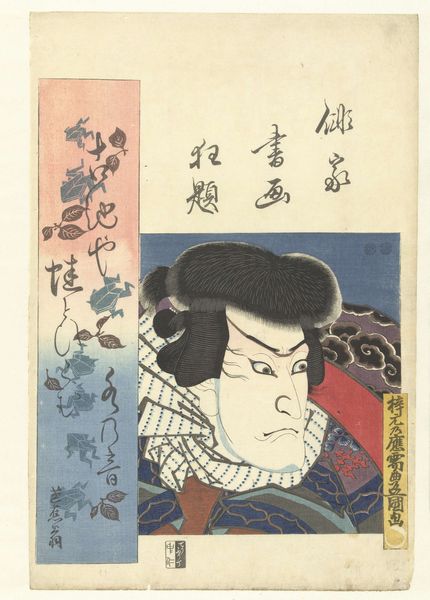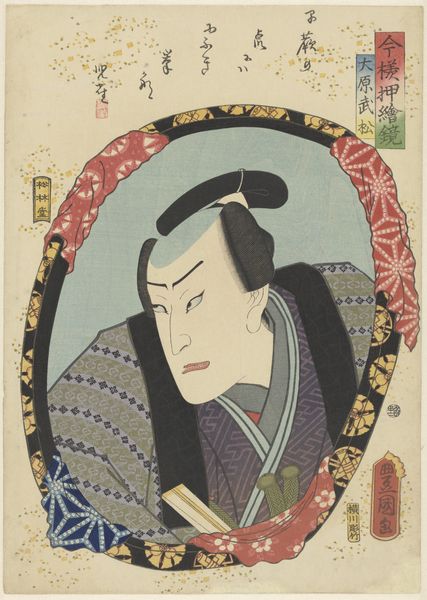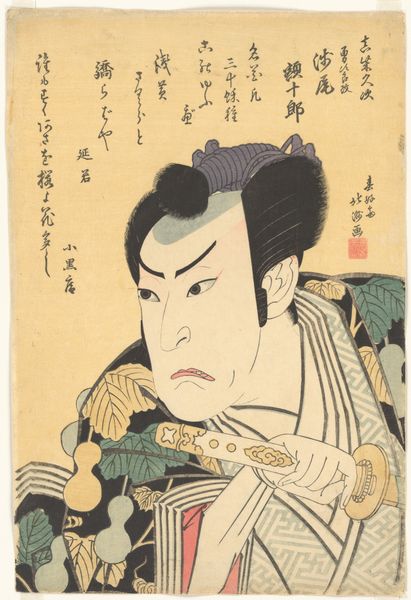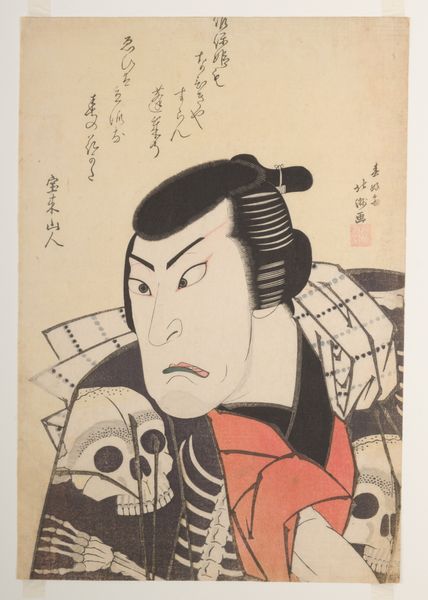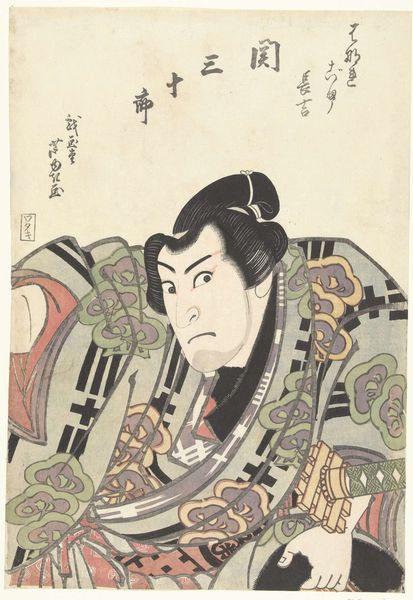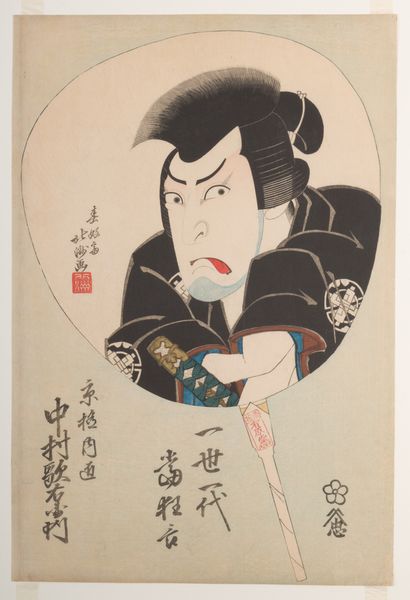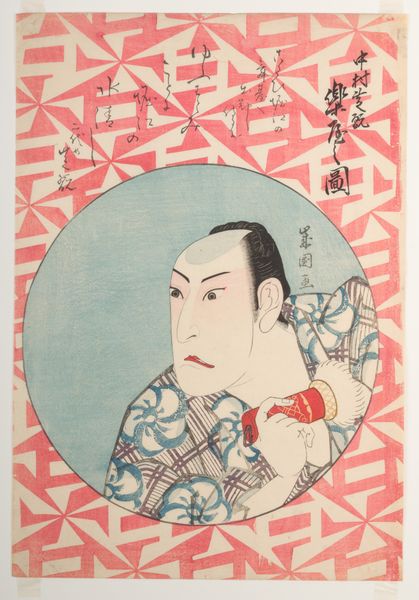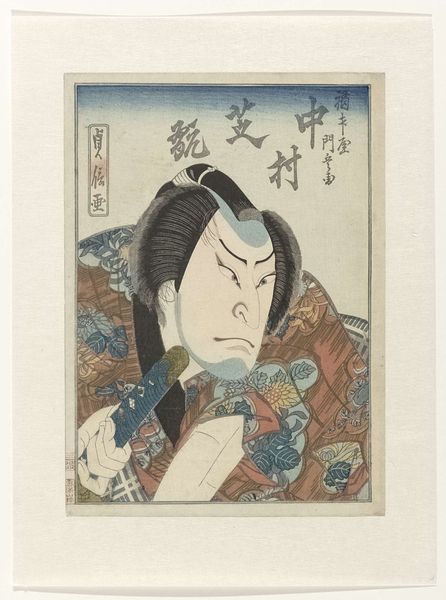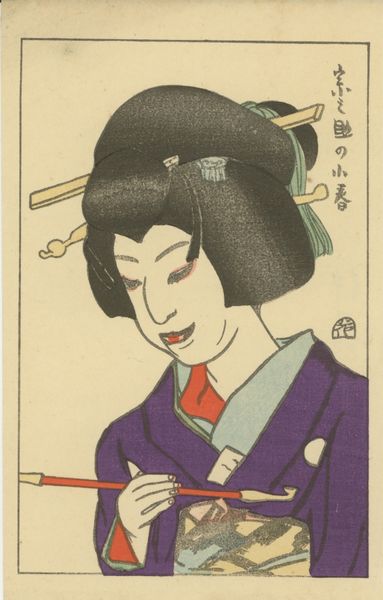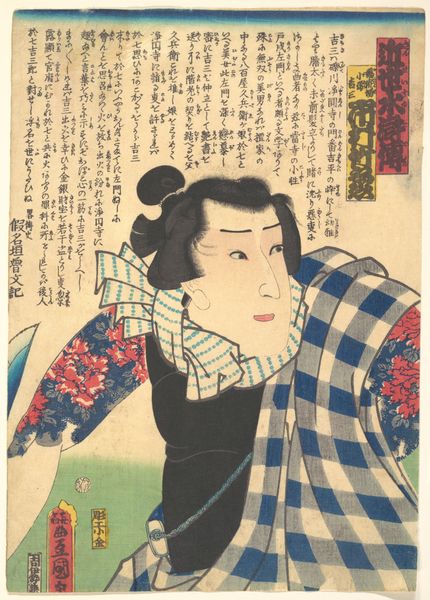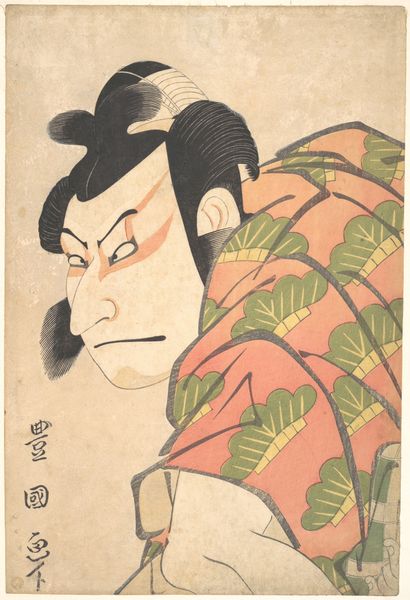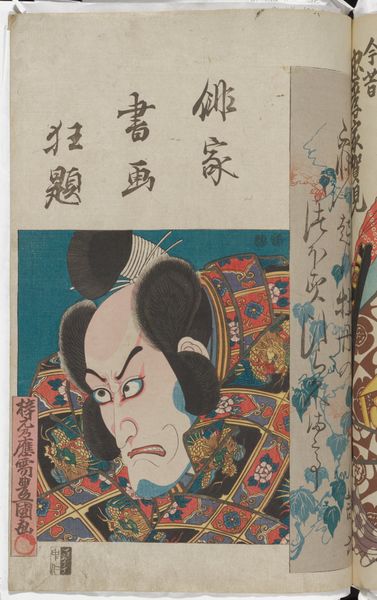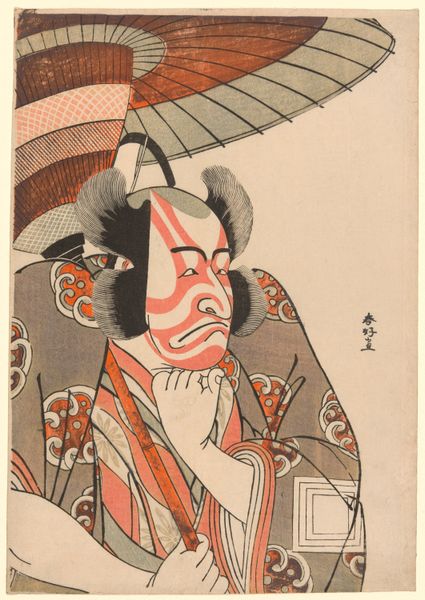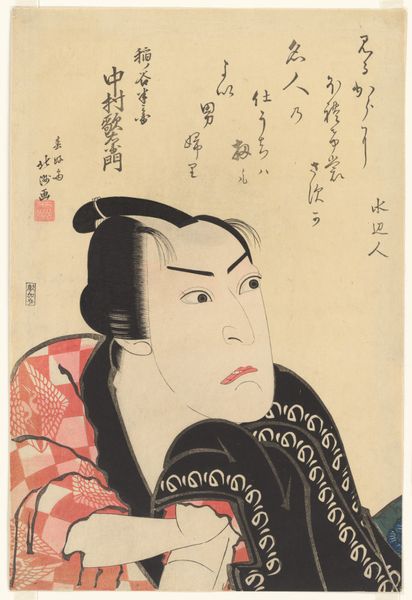
Portrait of Arashi Kichizaburō III (1810–1864) in the Role of Baiōmaru 1830 - 1850
0:00
0:00
print, woodblock-print
#
portrait
# print
#
caricature
#
asian-art
#
caricature
#
ukiyo-e
#
woodblock-print
Dimensions: Vertical ōban; Image: 14 3/4 × 10 1/4 in. (37.5 × 26 cm)
Copyright: Public Domain
Curator: Here we have Utagawa Kunisada's woodblock print, dating roughly from 1830 to 1850. It's a portrait of Arashi Kichizaburō III in the role of Baidōmaru. The work is currently housed at the Metropolitan Museum of Art. What strikes you immediately? Editor: Well, the sheer intensity of the figure's expression is the first thing that jumps out. The stark white face with the bold red makeup feels very arresting, very deliberate. There's a story being telegraphed here, isn't there? Curator: Absolutely. Kunisada was a leading designer of ukiyo-e woodblock prints in 19th-century Japan, and this print offers a glimpse into the world of Kabuki theatre, which was an important cultural institution. The makeup, or kumadori, signifies the character’s traits, doesn’t it? Editor: Indeed. Red in kabuki makeup generally represents courage, passion, or other positive attributes. But it can also symbolize anger, even demonic qualities depending on the specific pattern and context within the play. The bold stripes are far from subtle. It also gives him the illusion of almost popping from the design, a really interesting choice for stage work that could otherwise blend to the scene. Curator: He plays with depth quite deliberately I think. We can also observe the use of stylized costume patterns. The character appears framed within a stylized, vertically elongated lozenge. This oval frames the face but also gives him the three-dimensionality without shading. Editor: It’s more than just a decorative choice; these visual cues helped audiences instantly recognize the character's archetype and narrative function, even from a distance in a crowded theatre. What fascinates me is the enduring power of these symbols – they're cultural touchstones. Curator: Exactly, Kunisada skillfully caters to that expectation, reproducing famous roles from the stage in print, thus boosting his popularity as well as drawing people to theatre in that period. Editor: Thinking about the history and culture gives the work more depth, and it's interesting to reflect that his portrayal transcends mere physical likeness and carries a rich, encoded narrative. It makes me wonder what contemporary icons we will find embedded and reinterpreted by artists two hundred years from now! Curator: An excellent point! I am struck once again by how a piece of commercial art can serve as a document, revealing so much about the relationship between the artist, cultural institution and contemporary consumer of art.
Comments
No comments
Be the first to comment and join the conversation on the ultimate creative platform.
